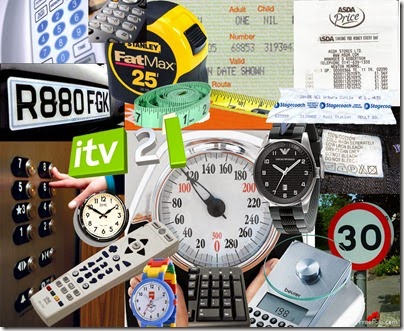Hmmm.. for such a short question, it sure is difficult to respond to. Like many of you, I have never really tried to define math or thought about what it is. I tried to come up with my own definition of math for the start of this blog post, but keep backspacing everything I write.. I think I'll skip that for now.
When I think about math, many things come to mind. In my opinion, problem solving, equations, money, geometry and patterns are some of the math-related concepts I frequently use. Having two jobs and taking six courses here at MUN has gotten me into the habit of ALWAYS making lists. And I mean always. If I'm not writing out a to-do list (which I usually never conquer), I am making one in my head. Although after writing that I stopped to question my own sanity, I consider this list making a form of problem solving. I am constantly wondering, "if I have class until 3, and have to work at 5, do I have enough time to go to the gym?". Although this is not your typical "If Sally has five apples and Tommy steals 2, how many does she have left?" problem, it follows the same principle and therefore, I consider it math.
Like everyone else, I use math to calculate how much money I can expect to make on my next paycheck, or whether or not I have enough money left to buy something at a store. Aside from these obvious examples, I have noticed that I use math in many more ways as well.
Looking around my room, I notice that I have one big picture hanging on my wall with three smaller ones underneath it. Each of the smaller pictures are all an equal distance away from the bigger picture and each other. I must have used some form of math when hanging these pictures in my room. Also, when painting my nails, I will often use a different colour or pattern on one of my nails so that both hands look the same. Although some people would never consider this to be math, patterns are one of the first things that children are introduced to in math class, and I am following pattern rules when doing my nails.
I guess the point I'm trying to make here is that I do not know how to define math. To me, there are many different forms of math which can all be used in different contexts. I certainly wouldn't define the math I used to hang the pictures on my wall in the same way that I would define the lengthy (and confusing) physics equations that Sheldon Cooper writes on his board on the show The Big Bang Theory. So, in my opinion, math needs to be defined based on context. It is not simply calculating numbers on a piece paper.
Math is everywhere. It can be as simple as five children taking turns in a board game, following the same pattern in sequence every time. It can be someone trying to figure out if they have enough money in their wallet to pay for the groceries in their cart. It can also be a mathematician or physicist working out an equation or theory about something that is far too complicated for me to understand. Math is a woman who quadruples her recipe when making her famous cookies for her family members during Christmas. In the medical field, math is the medication dosages that are being calculated based on a person's weight, age or some other value. Again, math is everywhere.
I am no further ahead than I was at the beginning of this blog post. I have not come up with a way to define math. The only thing I know is that there are a number of types of math and that in one form or another, it is used by everyone on a daily basis (even if people do not realize it).
I may be editing this post as (and if) the definition of math becomes more clear to me throughout the course, but this is all I have for now.
Cheryl


